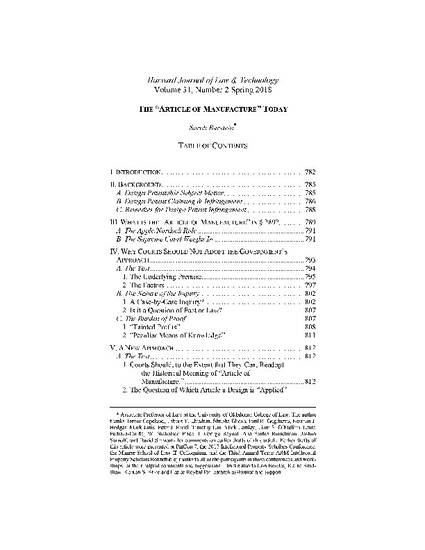
Article
The "Article of Manufacture" Today
31 Harv J.L. & Tech. 781
(2018)
Abstract
In Samsung v. Apple, the U.S. Supreme Court ruled that the phrase “article of manufacture” in 35 U.S.C. § 289 of the Patent Act can refer either to the infringer’s end product or to a component thereof. But the Court refused to formulate a test for what constitutes the relevant “article” in a given case. The three district courts that have had to confront this issue have adopted the multi-factor, case-specific approach proposed by the U.S. Government in its Samsung amicus brief. However, the Government’s approach is based on a flawed legal premise, fails to reflect either the language or the original intent of the statute, and will increase the cost and uncertainty of design patent litigation. This Article proposes a different approach. It argues that courts should adopt the historical meaning of the phrase “article of manufacture” in interpreting and applying 35 U.S.C. § 289. It also argues that the determination of which article a particular design is “applied” to should be informed by the original understanding of what constituted a protectable “design.” This Article then proposes a framework for applying these principles at Samsung step one, including an explanation of why this should be treated as an issue of law, not an issue of fact. This approach provides a workable solution that would be easier and cheaper to apply than the other proposed tests. This approach would also minimize the in terrorem value of partial design patents and result in more proportionate awards that would better reflect the designer’s actual contribution without providing an excessive windfall in most cases.
Disciplines
Publication Date
Spring 2018
Citation Information
Sarah Burstein. "The "Article of Manufacture" Today" 31 Harv J.L. & Tech. 781 (2018) Available at: http://works.bepress.com/sarah_burstein/40/
